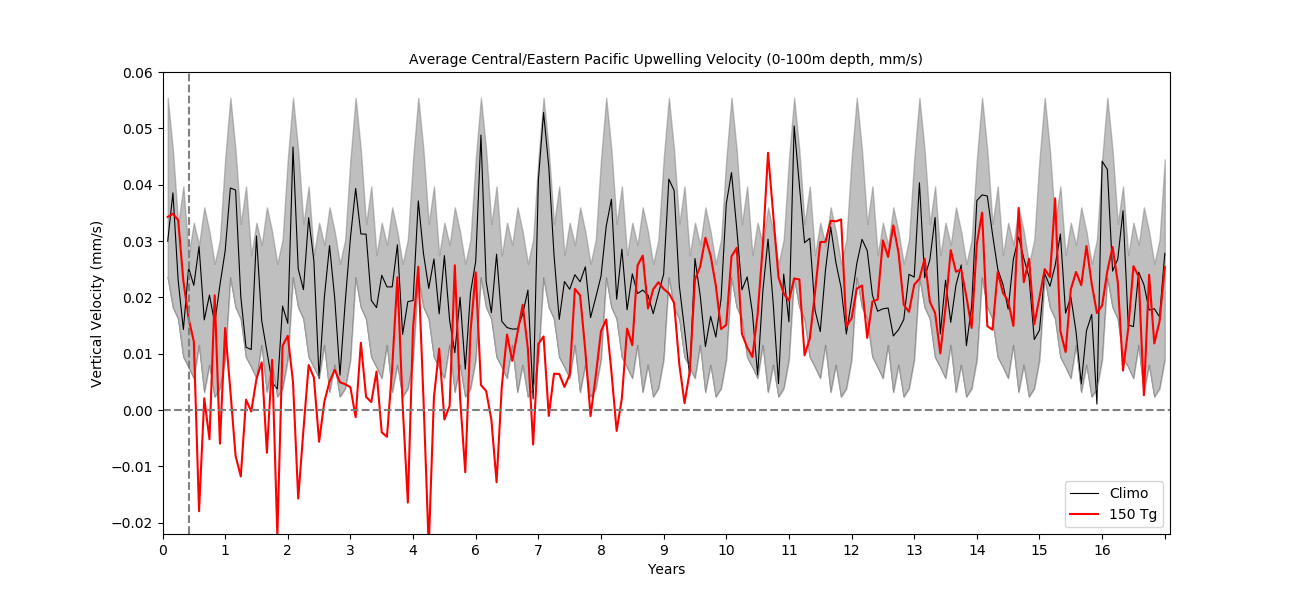
Changes in Equatorial Upwelling During a Nuclear Winter
Equatorial upwelling, which is normally observed year-round, shuts down following the injection of 150 Tg of black carbon into the upper atmosphere. Averaged from 180W to 270W, the vertical velocity along the equator (5S to 5N) drops below zero, indicating downwelling at the equator. During the entirety of the control run, there is not a single month where downwelling is greater than upwelling along the equator. The grey shading in the plot below represents +/- 2 standard deviations from climatological upwelling conditions. During the 150 Tg black carbon injection, upwelling is weakened beyond this threshold for the majority of months during the 4 years after the injection.



What causes the downwelling?
Changes in wind, resulting in convergence on the equator is likely a contributor to the piling of water there. The Intertropical Convergence Zone (ITCZ) in the Pacific shifts considerably southward during the summer , favoring weaker easterly trade winds along the equatorial Pacific Ocean. Additionally, the thermal contrast between the land and the ocean results in a circulation off of the land that injects westerly winds into the Western Pacific Ocean. The figures below show the vertical velocity of the surface layer for 0005-06 and 0005-10.
|
|
|
Vertical velocity with meridional surface current anomaly contours for 0005-06 and 0005-10.
|
|
|